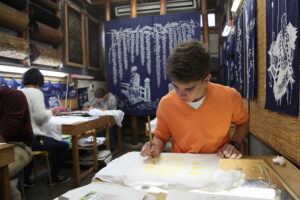The Pandemic Exacerbates Latin America’s Already Troubled Education
The impact of the pandemic has been devastating to the education sector around the globe. Many governments, including those in Latin America, have introduced educational quarantines to protect students from the virus. Since the beginning of 2020, young students and children have been put away from their schools, teachers, and peers, as a part of the social distancing policies. With the pandemic lasting well over two years, educators in Latin America put efforts to look forward into the future but with concerns about the fate of education in their countries.
Case for Brazil
Priscila Cruz, the executive president of Todos Pela Educação, a civil society organization working to improve the quality of basic education in Brazil, discussed the difficulties of delivering quality basic education to students in Brazil and Latin America. Referring to the fact that only a few Brazilian states have been successful in improving education quality, Cruz emphasized the “need to universalize equality.”
For instance, those successful states were among the only few capable of carrying out remote learning in March 2020 at the onset of the pandemic. Other schools in Brazil, which are the great majority, have not found a viable option to institute remote learning and remained closed for the most part. Cruz expressed her hesitancy to predict how the pandemic will affect education in Latin America, especially those that had to adopt school closing policies. Yet, she was certain that the pandemic has practically rescinded the progress made in education in recent years, possibly taking Brazil back to the quality and level of education 10 years ago.
As she provided suggestions for a resolution to the educational problems in Latin America, Cruz sent out a message: “Can we build a new renaissance?” Specifically, she proposed an educational reform which encompasses sharing resources and adopting effective practices from the successful states. She also pointed out the need to implement technical and vocational programs to motivate dropout students to return to school.
Case for Mexico

Sylvia Schmelkes, the academic vice-chancellor at the Universidad Iberoamericana in Mexico, joined the discussion, addressing the similar ongoing educational difficulties in Mexico. She said that the pandemic has worsened the already deeply troubled education in Mexico, lowering the quality and accessibility even more. She especially noticed the growing disparity in the technological and financial situation of families — approximately 60 percent of the students had the means to learn from remote classes. Unfortunately, however, the situation is predicted to get only worse, for the poverty levels in Mexico jumped from 42 percent to 54 percent between 2020-21.
She suggested several approaches to tackle the matter to establish more substantial equity. These include a reformation of educational assessments, higher priority on teachers, and attention to disadvantaged communities where access to remote learning was minimal or non-existent.
Schmelkes elaborated on the approach, “This list of ways forward would seem that they are not emergency measures for facing the aftermath of the pandemic, but rather reflect what many of us have always wanted the educational system to be: equitable, inclusive, decentralized, warm and welcoming, centered on significant learning, a system that trusts its teachers and supports them with the training they need to achieve learning results in very diverse realities.”
Case for Chile

Paula Louzano, dean at Universidad Diego Portales in Chile, reported on the status quo of the education field in Chile. Prior to the pandemic, the country had focused on hosting competent teachers, whom they believed to consequently develop the overall quality and equity of education. Accordingly, the nation implemented policies to attract talents to the education profession by raising salaries for teachers and improving their working conditions. Although the policy change was done as a response to the increased number of student enrollment, this led to a problem. With no national standards, teachers producing lower-quality education were becoming more common.
According to Louzano, there are two considerable effects of the pandemic on the teachers. Firstly, the heavy reliance on online teaching has resulted in a significant decrease in the immediate necessity of in-person practical trainings through educator programs. The second effect, yet possibly the more perceivable, is that teaching as a profession has become much less popular compared to the pre-pandemic era. Previously, teachers felt higher motivation and satisfaction as they could directly experience the positive change they make in their students. However, now with the widespread distance learning, such rewarding experience has significantly diminished. Now, health-related occupations, which have traditionally come with more prestige and higher salaries, are more frequently pursued.
Louzano suggested ways to make a progress in the education field currently facing numerous challenges all around the world. She underscored the importance of strengthening the relationships between education programs at universities and the local schools to better resonate with the needs of the local education communities. She said, “The pandemic is not used as an excuse to lower the quality of our teacher preparation programs, but on the contrary, we use this crisis to become stronger.”
Read More: The Impact of the Pandemic on U.S. Colleges



